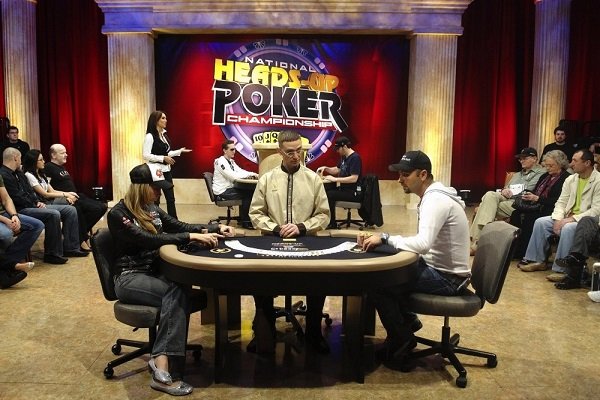Playing heads-up is the closest you’ll ever get to feeling like cheating. Easier than beating pocket aces, weaker than beating kings, aces & kings. It’s the closest you’re ever going to get. The reward may still be frustrating, but at least there’s no face-to-face confrontation or embarrassed fumble.
Believe me, I’ve tried. It’s been fun, but I keep failing. I keep discovering the hard way that playing poker is not about power, nor is it about luck. I keep discovering new concepts such as position, and starting hand. I even have a list of starting hand recommendations that change depending on position. (2 through 10 should be played the same, regardless of position.)

The thing is, for twenty years or so, most every one of those starting hands has been played in tournament or sit & go poker. I’m sure that if I had kept these secrets to myself, I’d still be practicing. But, I’m not going to waste my time re-discovering them. I’m going to share them with you, because if you’re making poker, your knowledge may as well be Ended with the tip, “Don’t Improve Your Game By Playing.”
From the recommended position in the beginning, you can play any hand you want against any opponent, because as soon as you act, your opponent will have the information you had when you looked at your hand.
Let me take this small victory for a second, and talk about why poker is not a game of luck.
Most players don’t think about this, but you can’t blindly fire a $10 raise key without having a solid hand. Even if you raise pocket kings blindly on the button. There’s a reason for this, and now you get it.
In fact, there are 3 reasons why you can’t blindly play any hand. First, you don’t know what pocket kings is. Second, you can’t raise in position. And third, if you try to call a raise, someone else probably has the same hand.
What this means is that the only hands you should try to limp with are premium hands. It makes no sense to limp with 8-6o, 7-6s, 5-7o because you’ll visitor the flop on atextured board. Why? Because you’ll losechances to double up, and even worse, someone may re-raise you here with a better hand.
Why raise in position though? You can do this for a few reasons.
One, you may want to represent high pair, or a high card. It could be something like A-K or A-Q, and you want your opponent to have a hand like Q-10 or Q-J. If you’re in early position, you don’t want your opponents to have something like A-6 or 5-4, otherwise you’re just frustrating yourself. Remember this.
Another reason to raise in position is to try and make the pot bigger. Like I said above, you want your opponents to haveate to a hand like Q-10 or Q-J. You want to try and win the blinds or small bets, not big bets. Plus, you can bet the flop if you have a solid read on your opponents.
The third reason for raising in position is to limit the stack sizes of the players behind you. If you make a standard raise of 4x the big blind, you’re not going to scare away players with pocket Aces, no matter what they choose to do. Especially with multiple players at the table, you’re going to be up against at least one limper and usually 2 or 3 callers. The smaller stacks will still be there and happy to see you when you shove.
